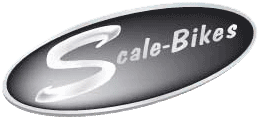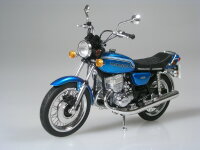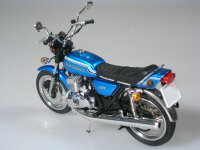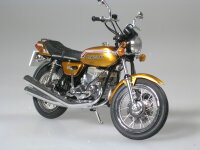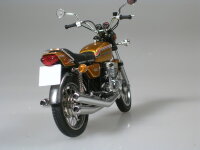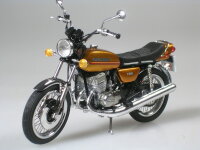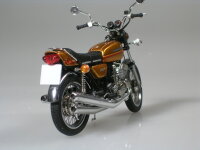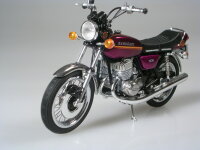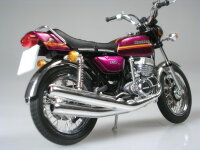Kawasaki H2
The seventies started tragically for all music fans: Jimi Hendrix, Janis Joplin and Jim Morrison passed away shortly one after the other. - The Beatles disbanded. But at the same time punk emerged, some guitar bands formed up and Southern Rock was born. We were entertained by Deep Purple from England. At that time, classic motorcycle racing was dominated by Angel Nieto in the small categories. The unforgotten Jarno Saarinen died too young and so, unfortunately, he could win the world championship only once in 1972. The MVs with Agostini and Read conveyed the sound experience in the 500 class. The South-African Kork Ballington, who lives in Australia *, became double world champion in 1978 and 1979 with the 250cc and 350cc machines. The famous English number “7” took the world title in 1976 and 1977. Then, in 1978 the Americans became predominant in the 500cc class for a long period - led by the gorgeous yellow-black painted Yamaha of Kenny Roberts. For the common motorcyclists, the “wonderful new world” already began at the end of the sixties, when the Japanese constructed big volume engines with multiple cylinders and thus stupefied us youths. Power and not road performance, made Kawasaki sell the fantastic three-cylinder two-stroke engine for over ten years since the end of the sixties. What did evoke the enthusiasm for this engine: its speed-up, its elegant design or its unique sound? I think it was all three of them. As far as I am concerned, it was both the design and the tremendous two-stroke sound. Critics compared this sound to the noise of a shaken can filled with nails. “Ignoramuses” is all I have to say… 71 jaunty HP with a weight of roughly 463 lbs easily powered the 750 H2 and its dauntless rider to the 200 sonic barrier and even beyond it. The 900 Z1 built at a later date by the same producer was not considerably faster. The two-stroke with its port control was a simple construction. The CDi-ignition didn’t adjust wrongly. When something broke down, it could be easily mended. On the other hand it was a bit more difficult to reach the theoretically possible speed of the engine on the road. A strong turn with the right hand and there was as lot to tell at the regulars’ table: the front wheel unintentionally went up into the air, the load lurched around its longitudinal axis, the mileage was enormous at a speedy pace, etc., etc. At that time riders of 500cc and 750cc could be divided into two categories: Either they were exceptionally gifted racers or they constantly came a cropper. Being able to ride those engines, maybe experiencing the first date, made that time something special and unforgettable. Scale-Bikes has now produced a 1:18 model of the most beautiful and biggest three-cylinder motorcycle – not only in our opinion! A model of the Kawasaki 750 H2 Mach IV which had to follow its little sister H1 in 1972 . This exclusive model is made of zinc die casting, plastic and rubber and reflects flair and technology of the motorcycle construction at that time. True to the original, the spokes are not injection-moulded but made of drawn wire. A reflection of the original of the seventies has been created with love to details from the exact colouring to the different labels up to the minute and the tiniest components. Measures: approx. An absolute must for every collector, for every former or every happy actual owner of an original engine and for every nostalgic person yearning for the seventies. * For me, Kork Ballington was an Australian. Rod Harvey, Manager of "National Motor Racing Mudeum", Bathurst, Australia, corrected us here. Thanks for this!
